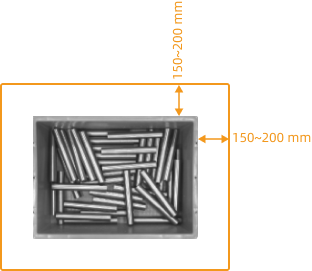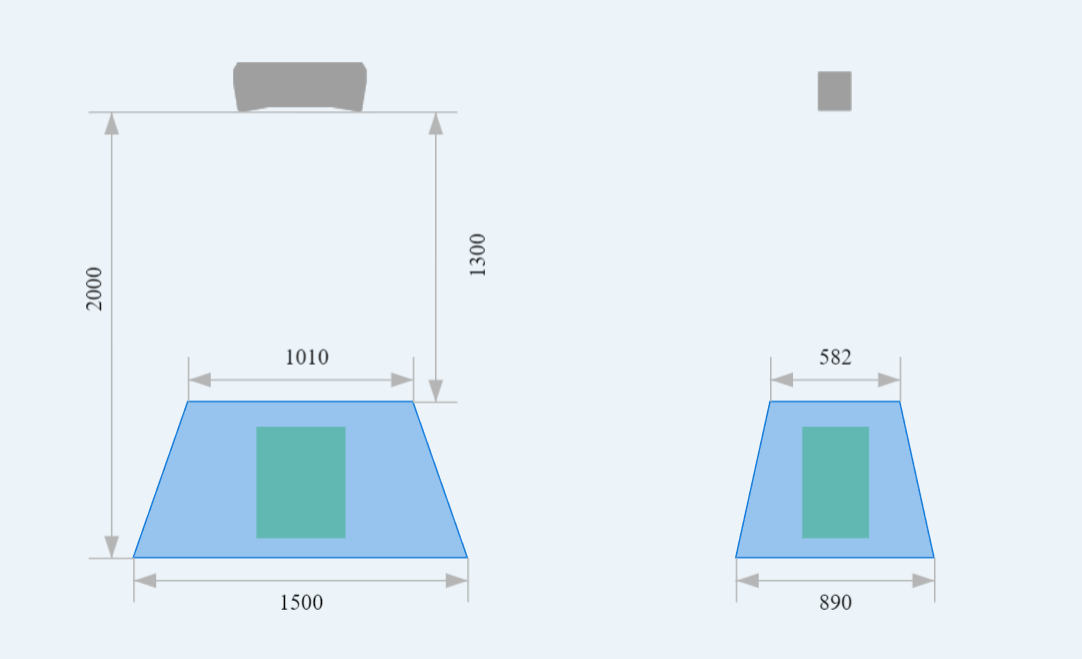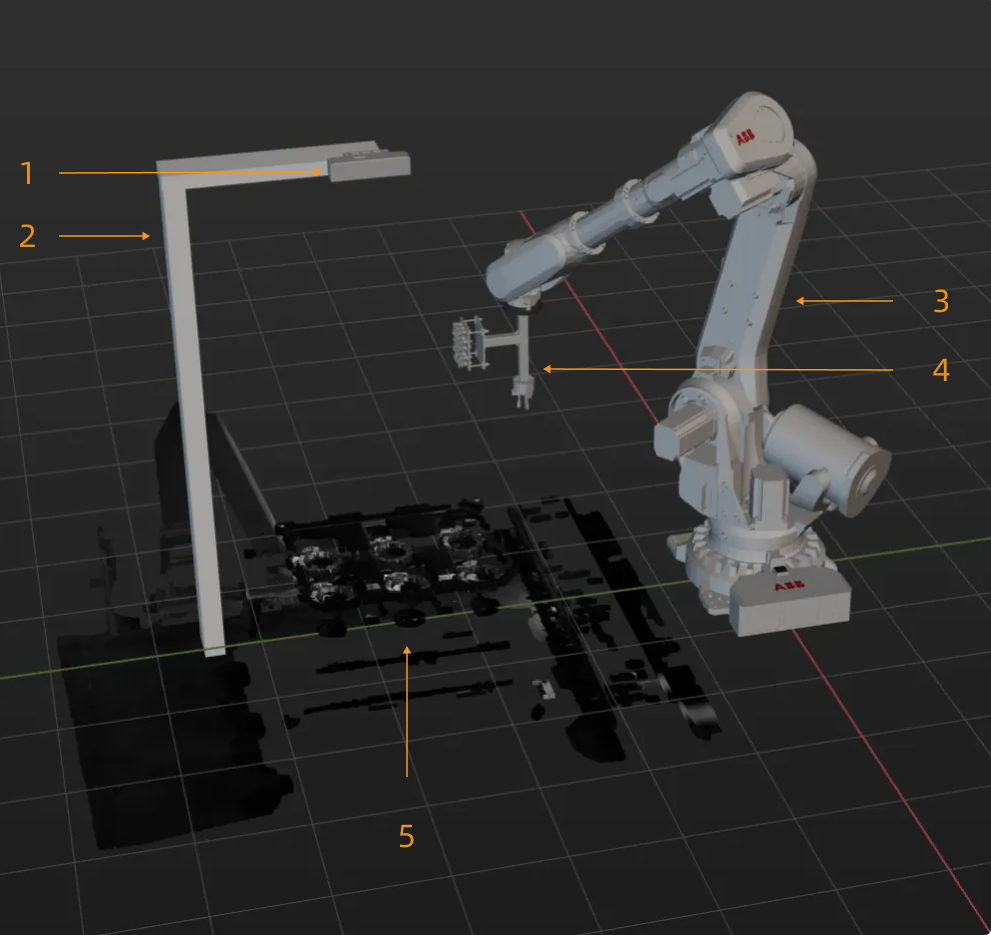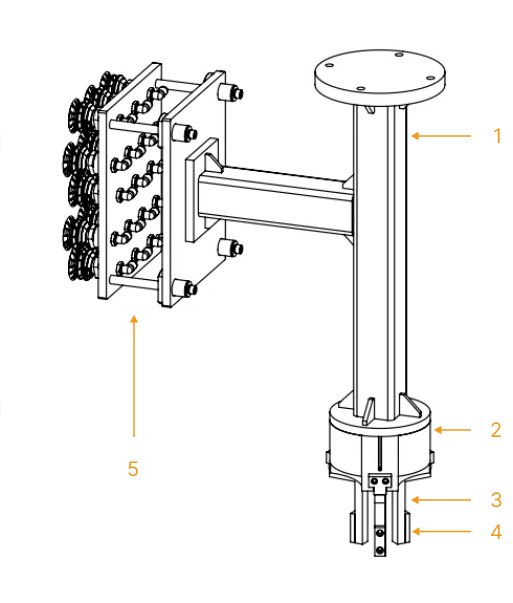Solution Design
This section introduces the solution design of the Stators solution, including the workflow of the vision system, software combination, camera selection, calibration board selection, IPC and robot selection, workstation and gripper design, etc.
Software Combination
This solution uses Mech-Vision to recognize stators’ poses and plan a path for picking them.
As shown below, Mech-Vision plans a robot picking path based on the poses and sends the planned path to an external device (such as a robot, PLC, etc.) through Standard Interface communication.

Select Camera and Determine Mounting Height
Considering the camera’s field of view, accuracy, and working distance, it is recommended to use Mech-Eye LSR L-GLindustrial 3D camera (hereinafter referred to as LSR L-GL camera) for stator loading. The camera has high accuracy, fast speed, and excellent resistance to ambient light. For detailed technical specifications of the camera, please refer to LSR L-GL Technical Specifications. If you need to use other camera models, please use the 3D Camera Selector to select the appropriate model.
After determining the camera model, please use the3D Camera Selectorto determine the mounting height of the camera. Follow the steps below:
-
Determine the dimensions of the objects on the top layer and the possible maximum height, and fill in the Length, Width, and Height in the Object dimensions panel.
To accommodate deviations in the position of the incoming workpieces, a margin of 150–200 mm should be left on each side of the top layer, as shown below. Namely, the length and height values should equal the dimensions of the top layer of the objects plus the reserved margin shown in the figure below.

-
Turn on the switch to the right of Distance from camera to object and keep adjusting the parameter value until the square on the right that representing the object is at the center of the camera FOV and is completely covered, i.e., the square becomes green.

-
Mounting height = Distance from camera to object + object height.
To ensure good data quality, the distance from the camera to the top layer of the objects should be within the recommended working distance, provided that the requirements of the FOV and robot workspace are met.
Select IPC Model
The recommended IPC is Mech-Mind IPC STD, which is suitable for regular depalletizing and loading scenarios.
Select Robot Model
In the Stators Solution, a six-axis robot with a large picking range and high accuracy should be selected according to the picking range and accuracy requirements. The ABB_IRB_6700_150_3_20 robot is used as an example in this solution.
For robots of other brands, please refer to Robot Model Selection.
Workstation Layout Design
The layout of the on-site workstation is shown in the figure below. The LSR L-GL camera is mounted two meters directly above the part tray. After capturing images, the camera can acquire point clouds of all target objects. The parts in the figure are: 1-LSR L-GL camera; 2- camera mounting frame; 3-robot; 4-robot tool; 5-infeed tray.

Robot Tool Design
In this solution, a three-finger internal gripper is used to pick the stator. The gripper is suitable for scenarios where there are grooves or a through hole on the surface of the target object that allow the gripper to be inserted. The design is shown in the figure below: 1-mounting flange; 2-three-finger pneumatic cylinder; 3-internal finger gripper; 4-finger sleeve; 5-partition gripper.

| In this solution, there are multiple layers of target objects on the pallet, separated by partitions. Therefore, the gripper must be configured to pick the partitions. The robot begins by picking the target objects from the top layer. Once the target objects on the top layer have been removed, the partition should be picked, followed by the target objects on the lower layer. If partitions are not used on site, you can omit this part when designing the gripper. |
